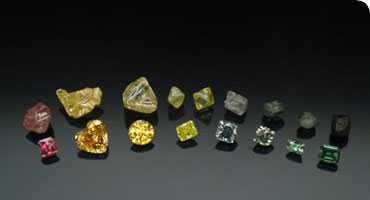Diamonds at the Museum
Diamonds may be beautiful but they are also important for research. Mineralogists at the Natural History Museum study gems and visitors can see diamonds in the galleries, including the stunning specimens in the Vault.
Mineralogy Department
The Museum is home to a Mineralogy Department where scientists study minerals, rocks and meteorites to understand natural processes. Their research ranges from understanding how pollutants disperse to how tectonic processes shape the Earth.
‘Our Earth is essentially a mineral crystalline sphere that orbits our sun each year, and on which all life depends,' says Alan Hart, minerals expert at the Museum.
Gemstones in the mineral collections
The Museum is also home to one of the best mineralogy collections in the world, collected together over more than 250 years. Some of the highlights are on display to the public. The Minerals gallery shows off raw, cut and polished gemstones and explains how some of them can be used in everyday situations, while thousands more gems glitter in the Earth's Treasury gallery.
The Vault
In November 2007 the Museum opened a new permanent gallery called the Vault where precious gems and minerals, including many diamonds, went on display to the public.
It includes wonders such as the Aurora Pyramid of Hope, a world-class collection of 296 naturally coloured diamonds. Only one in 10,000 gem-quality diamonds is coloured, making this an extremely rare collection. The colour comes from tiny amounts of elements other than carbon or from defects in the diamond structure.
Toolbox

Until 1938 whale carcasses were buried in the Museum grounds so that their flesh would decay leaving only the skeletons.
